Olallie State Park
- January 23, 2024
- 0 comment
Discover the serene beauty and outdoor adventures at Olallie State Park, a natural paradise for hiking, rock climbing, and waterfall sightseeing. Olallie State Park, located a stone’s throw away from Seattle, is a natural gem worth exploring. Known for its stunning Twin Falls and lush forests, this park offers a perfect mix of adventure and tranquility.
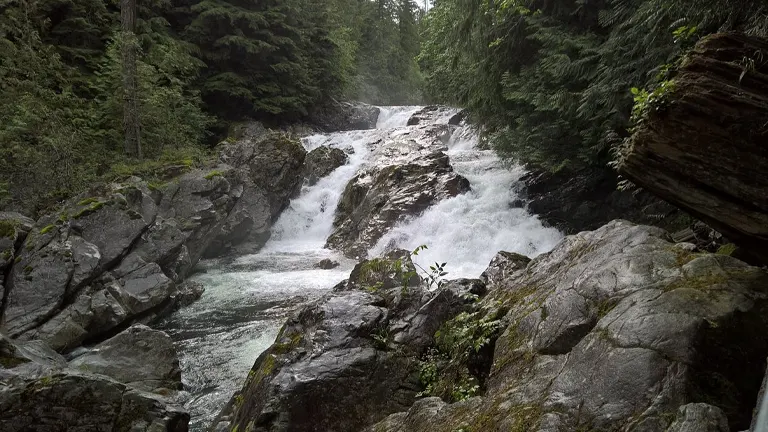
Whether you’re a hiker, a nature lover, or just someone looking for a peaceful day out, Olallie State Park provides an easy escape to the beauty of the great outdoors. With trails for all levels and scenic views around every corner, it’s an ideal spot to reconnect with nature and create lasting memories.
Characterizing Features of Olallie State Park
- Snoqualmie River: Flowing gracefully through Olallie State Park, the South Fork of the Snoqualmie River is the park’s lifeline. This river not only shapes the landscape, creating lush riparian zones and feeding the flora, but it also offers a serene backdrop for park visitors. The sound of its flowing waters enhances the tranquil atmosphere, making it a favorite spot for relaxation and reflection.
- Twin Falls: As one of the park’s most breathtaking sights, Twin Falls is a 135-foot-high marvel. This waterfall is not just a visual treat; it’s a symbol of the park’s natural beauty. The falls are easily accessible, making them a popular destination for both seasoned hikers and casual visitors. The viewing platform provides a stunning vantage point to observe the power and grace of the cascading water.
- Old-Growth Forests: The park’s old-growth forests are ecological treasures, featuring towering Douglas firs and Western Hemlocks. These ancient woods provide critical habitat for wildlife and a canopy that shades the understory, preserving moisture and supporting a diverse undergrowth. These forests are a window into the Pacific Northwest’s ecological past and a haven for biodiversity.
- Hydroelectric Project: An intriguing feature of Olallie State Park is the underground run-of-the-river hydroelectric project located at Twin Falls. This 24 MW facility, situated 325 feet below ground, showcases a harmonious blend of natural preservation and renewable energy production. It’s a testament to sustainable development within a natural park setting.
- Diverse Trails: The park offers a range of trails, catering to different interests and fitness levels. From the gentle, family-friendly Cedar Butte Trail to the more challenging Ollalie Trail for backcountry mountain biking, the park’s trails provide opportunities for hiking, mountain biking, and nature walks. These trails not only offer physical challenges but also serve as gateways to explore the park’s diverse landscapes.
History of Olallie State Park
Olallie State Park’s story begins in the mid-20th century, rooted in the natural allure of the Pacific Northwest. The journey started in 1950 when the State of Washington purchased a 160-acre parcel from Puget Sound Power and Light. This initial acquisition, primarily encompassing the area around the striking Twin Falls, marked the birth of what was then known as Twin Falls State Park. The park was established to protect its namesake waterfalls and the surrounding old-growth forests, offering an accessible natural escape for residents and visitors alike.
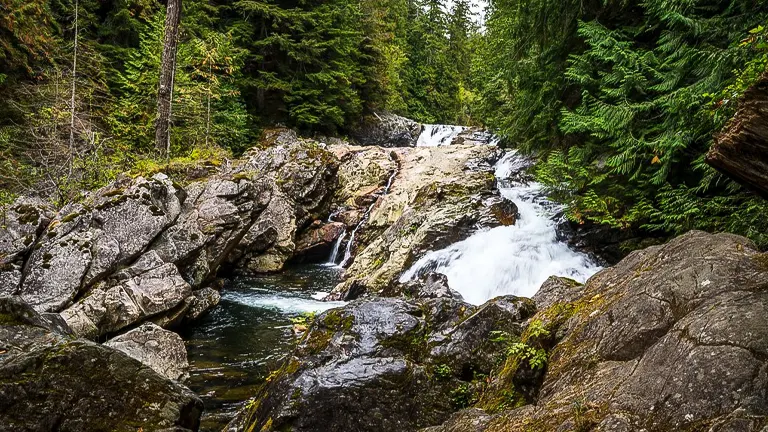
The park underwent a significant transformation in 1976, expanding its boundaries to include more of the stunning landscape along the South Fork of the Snoqualmie River. With this expansion, the park’s name was changed to Olallie, a term from the Chinook language meaning “berry.” The name change reflected not only the park’s growing diversity in terms of landscape and ecology but also its connection to the region’s cultural heritage. Over the years, Olallie State Park has evolved into a cherished public space, celebrated for its waterfalls, forested trails, and as a sanctuary for a variety of plant and animal species, embodying the spirit of conservation and outdoor recreation in Washington State.
The Importance of Conservation and Recreation in Olallie State Park
Olallie State Park stands as a vital testament to the harmonious blend of conservation and recreation. Nestled near Seattle, it’s a sanctuary that not only safeguards the stunning Twin Falls and the lush old-growth forests but also nurtures biodiversity and environmental health. The park’s conservation efforts ensure the protection of native flora and fauna, while also serving as a natural classroom for environmental education. Parallel to these preservation endeavors, the park offers a myriad of recreational activities, from tranquil hiking trails to exhilarating mountain biking paths.
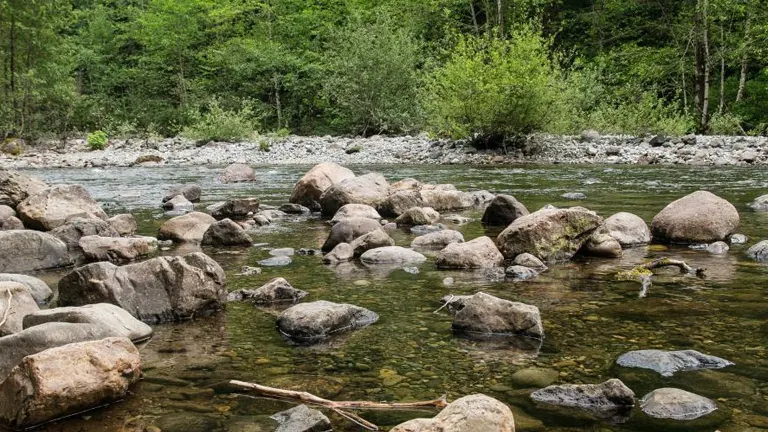
These activities provide visitors with an opportunity for physical and mental rejuvenation, deepening their connection with nature. This bond between people and the park fosters a sense of stewardship and advocacy for its ongoing preservation. Olallie State Park, therefore, embodies the essential balance of enjoying and protecting the natural world, ensuring its wonders endure for future generations to enjoy.
Unique Location of Olallie State Park
Olallie State Park, a scenic treasure just a 45-minute drive from the bustling city of Seattle, is uniquely positioned on the western slopes of the Cascade Mountains, offering an easily accessible nature getaway. This strategic location sets it apart as a peaceful retreat amidst the magnificence of the Pacific Northwest. The park, nestled along the South Fork of the Snoqualmie River, is not only a haven for nature enthusiasts but also a gateway to the diverse landscape of the region. Its proximity to major urban areas, yet feeling worlds away, makes it an ideal destination for day-trippers and outdoor adventurers alike.

The park’s location, embracing river valleys, dense forests, and a backdrop of mountainous terrain, provides a stunning contrast to city life, allowing visitors to immerse themselves in the tranquility and beauty of the natural world. Olallie State Park thus stands as a testament to the allure of Washington’s natural landscapes, bridging the gap between urban living and wilderness exploration.
Diverse Vegetation and Plant Species in Olallie State Park
- Douglas Fir (Pseudotsuga menziesii): Dominating the park’s landscape, Douglas Fir trees are towering giants of the old-growth forests. They play a critical role in the ecosystem, providing habitat and food sources for various wildlife species. These trees are not only a symbol of the Pacific Northwest’s natural heritage but also contribute significantly to the park’s lush greenery.
- Western Red Cedar (Thuja plicata): These majestic trees, known for their long life and rot-resistant wood, add to the park’s dense forests. Western Red Cedars are culturally significant to indigenous peoples and serve as an important ecological component, supporting diverse wildlife.
- Western Hemlock (Tsuga heterophylla): As Washington’s state tree, Western Hemlocks are a common sight in Olallie State Park. They thrive in the park’s moist, cool climate and contribute to the dense canopy that characterizes the park’s forests.
- Salmonberry (Rubus spectabilis): These shrubs are particularly noteworthy for their bright pink flowers and edible berries. Salmonberries are an integral part of the park’s underbrush, providing food for local wildlife and adding to the park’s biodiversity.
- Sword Fern (Polystichum munitum): This robust fern species is abundant in the park, thriving in the damp, shaded forest floors. Sword Ferns are a vital part of the park’s understory, adding to its lush green appearance and supporting the moisture-rich ecosystem.
- Mosses and Lichens: The park’s old-growth forests are home to a variety of mosses and lichens, which drape the trees and forest floor, creating a quintessential Pacific Northwest landscape. These species are crucial for maintaining the forest’s microclimate and providing habitat for small insects and organisms.
- Trillium (Trillium ovatum): Known for their distinctive three-petaled white flowers, Trilliums are a charming addition to the park’s flora. They bloom in the spring and are often found in the shadier, moist areas of the forest.
- Skunk Cabbage (Lysichiton americanus): Found in the park’s wetter areas, Skunk Cabbage is easily recognizable by its large, yellow-hooded flowers and distinctive odor. This plant is important for early pollinators and adds to the ecological diversity of the park’s wetlands.


Fauna in Olallie State Park
- Black-Tailed Deer (Odocoileus hemionus columbianus): A common sight in the park, Black-Tailed Deer are an integral part of the ecosystem. They play a role in seed dispersion and provide a food source for predators, contributing to the park’s biodiversity. Visitors often spot them grazing in the meadows or quietly moving through the forests.
- American Bald Eagle (Haliaeetus leucocephalus): As a symbol of American wilderness, these majestic birds are often seen soaring above the river or perched in tall trees. Their presence indicates the health of the park’s aquatic ecosystems, as they primarily feed on fish from the Snoqualmie River.
- Coho Salmon (Oncorhynchus kisutch): The Snoqualmie River is a critical habitat for Coho Salmon, especially during their spawning season. Their lifecycle, from spawning to returning to the ocean, plays a crucial role in nutrient cycling within the park’s aquatic and terrestrial environments.
- Northwestern Salamander (Ambystoma gracile): These amphibians are commonly found in the park’s moist environments. They are an important indicator species, as their health reflects the overall condition of the park’s wetland and aquatic habitats.
- Pileated Woodpecker (Dryocopus pileatus): Known for their distinctive drumming sounds and large size, Pileated Woodpeckers are crucial for the park’s forest health. They create large holes in trees that become nesting sites for various bird species and other animals.
- Steller’s Jay (Cyanocitta stelleri): Recognizable by their striking blue and black plumage, Steller’s Jays are frequent visitors to the park’s picnic areas. These birds are known for their intelligence and play a vital role in seed dispersal for several tree species.
- River Otter (Lontra canadensis): Although more elusive, River Otters can occasionally be seen along the banks of the Snoqualmie River. They are important for maintaining the balance of aquatic ecosystems, as they primarily feed on fish and other small aquatic organisms.
- Banana Slug (Ariolimax columbianus): These large, yellow slugs are a unique and important part of the park’s ecosystem. Banana Slugs play a significant role in decomposing fallen leaves and other organic matter, contributing to soil health and nutrient cycling.


Attractions in Olallie State Park
Twin Falls: The crown jewel of Olallie State Park, Twin Falls is a stunning 135-foot waterfall that cascades beautifully into a serene pool below. This natural spectacle is easily accessible through a well-maintained trail, making it a favorite among hikers and nature photographers. The falls offer a breathtaking view, especially during the spring when the water flow is at its peak. The surrounding area, with its rich greenery and tranquil ambiance, makes for a perfect spot for picnics and relaxation.
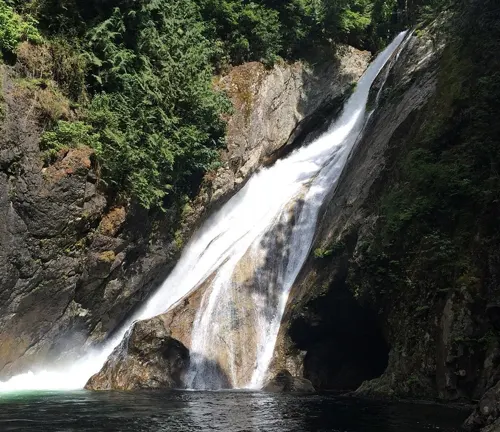

Old-Growth Forests: The park is home to expansive old-growth forests that are a testament to the natural history of the Pacific Northwest. These forests feature towering Douglas Firs and Western Hemlocks, some of which are hundreds of years old. Walking through these forests is like stepping back in time, offering visitors a chance to experience the region’s ancient ecosystem and connect with nature on a profound level.
Trail Systems: Olallie State Park boasts a network of trails that cater to all levels of hikers and outdoor enthusiasts. From the family-friendly Cedar Butte Trail offering gentle hikes to the challenging Ollalie Trail for backcountry mountain biking, these trails provide diverse experiences. Each trail offers unique views of the park’s landscapes, from river valleys to panoramic vistas of the Cascade Mountains.

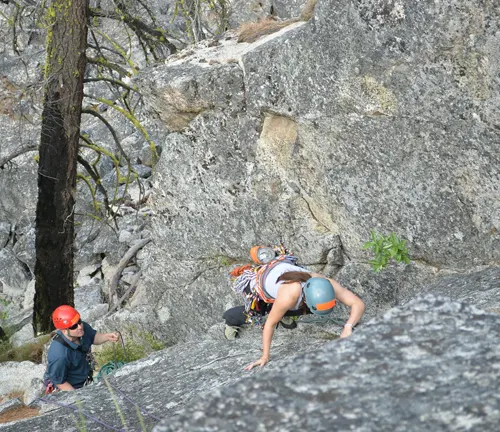
Rock Climbing Areas: For adventure seekers, the park provides several rock climbing areas with varying levels of difficulty. These areas, such as the Far Side and Deception Crags, are well-known in the climbing community. They offer climbers a chance to test their skills while enjoying the park’s natural beauty.
Interpretive Trail: Near the riverside picnic area, visitors can embark on an interpretive trail through the old-growth trees. This trail is not only a delightful walk but also an educational experience, with signs providing information about the local ecology and the historical significance of the area, including the Snoqualmie Wagon Road that ran through the region in the 1800s.


Picnic Areas and River Access: The park is equipped with several picnic areas, like the South Fork Picnic Area, which offer amenities such as tables and grills. These areas are perfect for family outings and provide access to the river for anglers or those who simply want to relax by the water.
Recreational Activities in Olallie State Park
- Hiking: Olallie State Park is a hiker’s paradise, offering a variety of trails that cater to all skill levels. The most famous trail is the one leading to Twin Falls, providing a moderate hike with rewarding views of the waterfall. For those seeking a more challenging adventure, the Ollalie Trail offers a more rugged experience, taking hikers through diverse landscapes of the park. These trails not only offer physical exercise but also an opportunity to immerse in the serene beauty of nature.
- Mountain Biking: The park boasts the Ollalie Trail, a backcountry route that challenges mountain bikers with its 9.2 miles of rugged terrain. Opened in 2017, this trail is a favorite among biking enthusiasts, offering a mix of steep inclines, rapid descents, and breathtaking views of the surrounding wilderness. It’s an excellent way for experienced bikers to test their skills and endurance.
- Fishing: The South Fork of the Snoqualmie River, running through the park, is a popular spot for fishing enthusiasts. The river is home to various species of fish, including trout, providing a peaceful and rewarding fishing experience. The South Fork Picnic Area offers easy river access for anglers, combining the joys of fishing with the beauty of the park’s natural setting.
- Bird Watching: The park’s diverse ecosystems make it a haven for bird watchers. From the majestic American Bald Eagle to the vibrant Steller’s Jay, bird enthusiasts can spot a variety of species in their natural habitat. The old-growth forests and river valleys provide an excellent backdrop for bird watching, especially during migration seasons.
- Rock Climbing: For those seeking an adrenaline rush, Olallie State Park offers several rock climbing areas. The Far Side and Deception Crags are popular spots, known for their challenging routes and stunning views. These areas cater to climbers of various skill levels, from beginners to experts, making the park a sought-after destination in the climbing community.
- Picnicking: With its scenic beauty and tranquil atmosphere, the park is perfect for picnicking. The South Fork Picnic Area, with its river access, is an ideal spot for families and groups to enjoy a meal amidst nature. The picnic areas are equipped with tables and grills, allowing visitors to relax and dine in the great outdoors.
- Nature Photography: The park’s stunning landscapes, from cascading waterfalls to lush forests, make it a favorite spot for nature photographers. Whether it’s capturing the dynamic flow of Twin Falls or the serene beauty of the old-growth forests, photographers find endless inspiration in the park’s natural wonders.


Different Facilities and Amenities in Olallie State Park
- Trailheads: Olallie State Park is equipped with several trailheads, each serving as a gateway to different parts of the park. The Cedar Falls Trailhead offers access to the long-distance Palouse to Cascades State Park Trail and the Cedar Butte Trail, ideal for family-friendly hikes. The Twin Falls Trailhead, on the other hand, is the starting point for the journey to the stunning Twin Falls, providing both hiking and fishing opportunities.
- Picnic Areas: The park boasts several well-maintained picnic areas, perfect for family outings and gatherings. The South Fork Picnic Area, located near the river, provides scenic spots with tables and grills. It’s an ideal place for visitors to relax and enjoy a meal surrounded by the park’s natural beauty, with easy access for anglers and a view of the river.
- Educational Displays and Interpretive Trails: Olallie State Park offers educational experiences through its interpretive trails. These trails are lined with informative displays that educate visitors about the park’s natural and historical aspects. Walking these trails is not only a chance to enjoy the park’s scenic beauty but also an opportunity to learn about the local ecology and the history of the area, like the Snoqualmie Wagon Road.
- Fishing Access: The park’s location along the South Fork of the Snoqualmie River makes it a prime spot for fishing. Designated areas along the river, such as those near the South Fork Picnic Area, offer convenient access for anglers looking to catch local fish species, providing a peaceful fishing experience amidst the park’s natural settings.
- Mountain Biking Trails: In addition to hiking trails, Olallie State Park includes mountain biking trails like the Ollalie Trail. This trail provides a challenging route for mountain bikers, featuring steep inclines and rugged terrain, set against the backdrop of the park’s stunning landscapes.
- Parking Facilities: The park is equipped with parking areas at its major trailheads and picnic spots, ensuring convenient access for visitors. These parking facilities are designed to accommodate a significant number of vehicles, making it easier for visitors to access the park’s attractions.
- Restrooms and Basic Amenities: For visitor convenience, the park offers restrooms and basic amenities at key locations. These facilities are maintained to ensure cleanliness and accessibility, providing comfort to visitors as they explore the park.
Tips and Advice for Visiting Olallie State Park
- Check Weather Conditions: Before heading to Olallie State Park, it’s crucial to check the local weather conditions. The park’s weather can be quite variable, especially if you’re planning to hike or engage in water activities. Being aware of the weather forecast helps in planning appropriately, ensuring a safe and enjoyable visit. Packing rain gear and layered clothing can be beneficial due to changing conditions throughout the day.
- Wear Appropriate Footwear: Given the park’s diverse terrain, from hiking trails to riverbanks, wearing sturdy and comfortable footwear is essential. This is particularly important if you plan to hike the trails leading to Twin Falls or engage in mountain biking. Proper footwear not only provides safety but also enhances the overall experience by ensuring comfort during your activities.
- Pack Adequate Supplies: Whether you’re visiting for a few hours or the entire day, packing adequate supplies is key. This includes water, snacks, a first aid kit, and any specific gear needed for your planned activities. For those intending to fish or picnic, remember to bring the necessary equipment and food. Keeping a map of the park can also be handy, especially for first-time visitors.
- Respect Wildlife and Natural Surroundings: Olallie State Park is home to a variety of wildlife and delicate ecosystems. Visitors are encouraged to respect these by observing animals from a distance, not feeding wildlife, and staying on designated trails to protect plant life. This not only ensures the safety of the park’s inhabitants but also contributes to the conservation efforts.
- Leave No Trace: Practicing Leave No Trace principles is crucial in preserving the park’s natural beauty. This means packing out all trash, staying on marked trails, and not removing any natural objects. By following these principles, visitors help maintain the park’s pristine condition for future generations to enjoy.
- Plan Your Visit During Off-Peak Times: To avoid crowds, especially during the summer months, consider visiting Olallie State Park during off-peak times. Early mornings or weekdays can offer a more tranquil experience. This also provides better opportunities for wildlife viewing and enjoying the park’s serene environment.
- Be Prepared for Limited Cell Service: In some areas of the park, cell phone service can be spotty or non-existent. Visitors should be prepared for this by informing someone of their plans and expected return time. Carrying a physical map of the park and a basic first aid kit can also be helpful in case of emergencies.
- Parking and Discover Pass: Ensure you have a Discover Pass for vehicle access, as it’s required for parking in Washington State Parks. It’s also advisable to arrive early during peak seasons to secure parking, as spaces can fill up quickly, especially at popular spots like the Twin Falls Trailhead.
Recommendation
If you’re looking for an outdoor escape that combines breathtaking scenery with a variety of activities, Olallie State Park is the perfect destination. Just a stone’s throw from Seattle, this park offers the enchanting Twin Falls, tranquil forest trails, and the soothing sounds of the Snoqualmie River. Whether you’re hiking, picnicking, or just seeking a peaceful retreat, Olallie State Park provides an easily accessible slice of natural beauty. It’s an ideal spot for anyone wanting to momentarily step away from the hustle of daily life and immerse in the serene embrace of nature.
Conclusion
Olallie State Park is a delightful retreat, seamlessly blending the beauty of nature with the thrill of outdoor activities. Its captivating Twin Falls and serene woodland trails offer a peaceful escape from the hustle of daily life. This park is a treasure of the Pacific Northwest, perfect for anyone seeking to explore the outdoors, unwind, and reconnect with nature’s wonders. Whether you’re a hiker, nature lover, or just in need of a tranquil getaway, Olallie State Park is an ideal destination.
FAQs
- What are the main attractions at Olallie State Park?
The park is renowned for its stunning Twin Falls, scenic trails, old-growth forests, and a variety of other waterfalls like Middle Twin Falls and Weeks Falls. It’s a great destination for nature lovers and outdoor enthusiasts. - Can I go camping at Olallie State Park?
Olallie State Park is primarily a day-use park, so overnight camping is not available within its boundaries. However, there are nearby camping options outside the park. - Is there a fee to enter the park?
There is no entrance fee for Olallie State Park, making it an accessible option for a day trip. However, a Discover Pass is required for vehicle access to state parks for day use. - Are there any guided tours available in the park?
The park doesn’t typically offer guided tours, but visitors can enjoy self-guided walks, especially along the interpretive trails where they can learn about the park’s natural history and ecology. - What types of wildlife might I see at Olallie State Park?
The park is home to diverse wildlife including black-tailed deer, American bald eagles, and various bird species. During certain seasons, you might also spot salmon in the Snoqualmie River. - Are the trails suitable for beginner hikers?
Yes, Olallie State Park offers trails for all skill levels, including beginner-friendly paths. The Twin Falls Trail, for instance, is a popular choice for families and novice hikers. - What should I bring for a day visit to the park?
For a comfortable visit, bring water, snacks, appropriate footwear for hiking, a map of the park, and a camera to capture the scenery. Always be prepared for changing weather conditions. - Is Olallie State Park pet-friendly?
Yes, pets are welcome in the park but must be kept on a leash at all times. It’s important to bring supplies for your pet and to clean up after them to maintain the park’s natural beauty.
In closing, Olallie State Park is a slice of paradise, offering everyone a chance to enjoy the beauty of nature. From the majestic Twin Falls to its tranquil trails, it’s a place where memories are made and the hustle of everyday life fades away. So, grab your hiking boots and experience the magic of this natural haven for yourself!



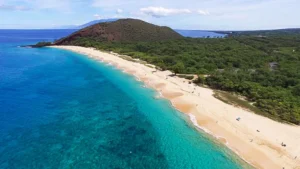
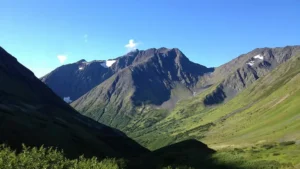
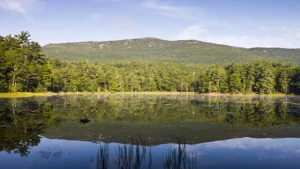

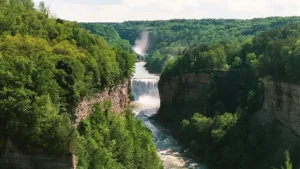



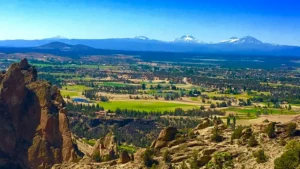
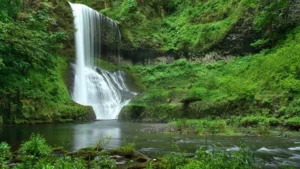

Leave your comment